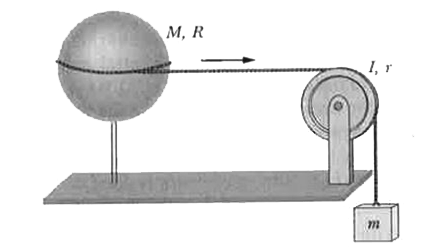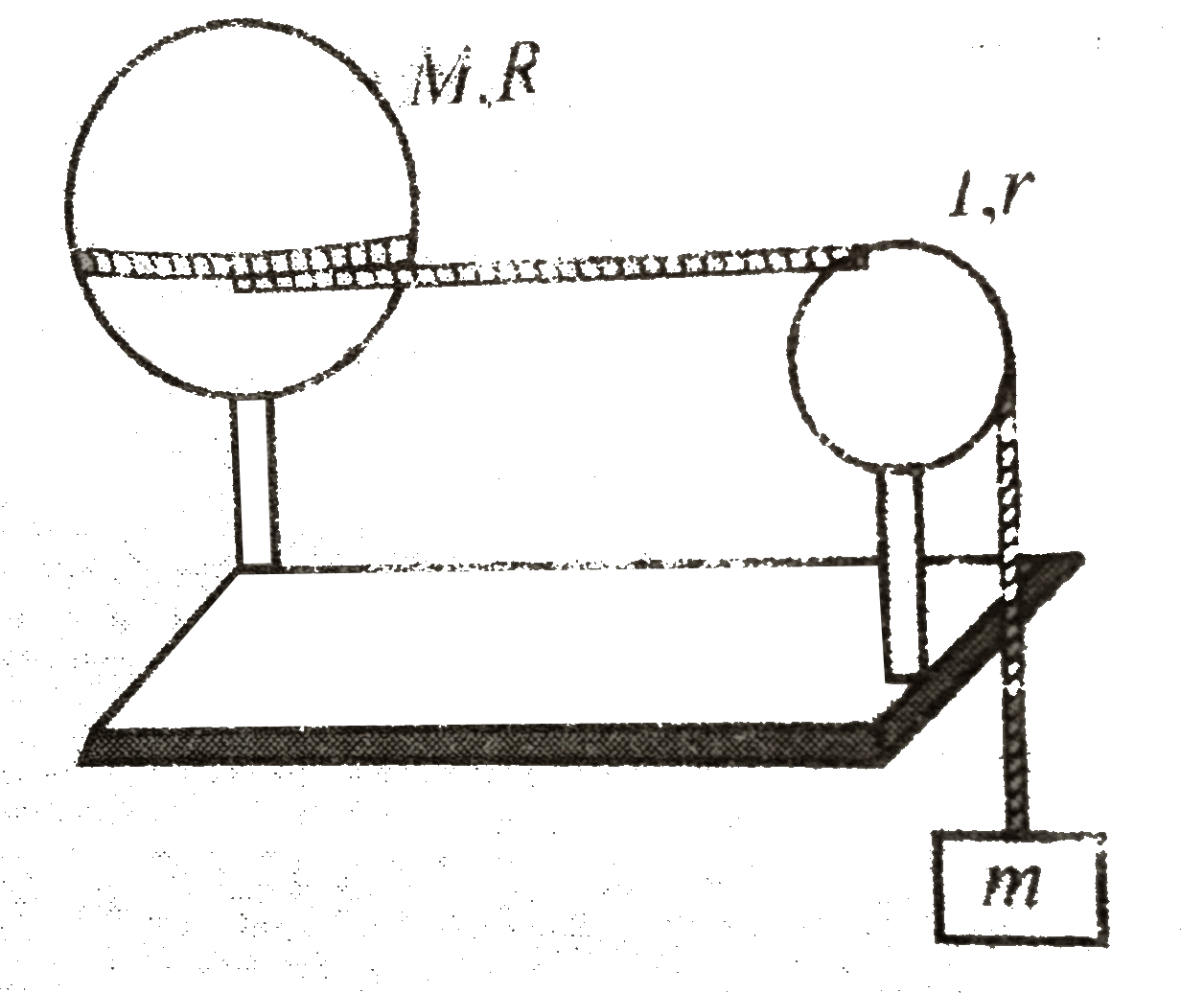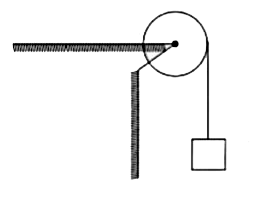A uniform spherical shell of mass M = 4.5 kg and radius R = 8.5 cm can rotate about a vertical axis on frictionless bearings (Fig. 10-69). A massless cord passes around the equator of the shell, over a pulley of rotational inertia I=3.0×10−3kg⋅m2 and radius r = 5.0 cm, and is attached to a small object of mass m = 0.60 kg. There is no friction on the pulley's axle, the cord does not slip on the pulley. What is the speed of the object when it has fallen 82 cm after being released from rest? Use energy considerations.

1.4 m/s
Topper's Solved these Questions
- RIGID BODY DYNAMICS - IBOOK - RESNICK AND HALLIDAYCHAPTER - RIGID BODY DYNAMICS - IEXERCISE - PRACTICE QUESTIONS (SINGLE CORRECT CHOICE TYPE)
43 Videos
- RIGID BODY DYNAMICS - IBOOK - RESNICK AND HALLIDAYCHAPTER - RIGID BODY DYNAMICS - IEXERCISE - PRACTICE QUESTIONS (MORE THAN ONE CORRECT CHOICE TYPE)
7 Videos
- RIGID BODY DYNAMICS - IBOOK - RESNICK AND HALLIDAYCHAPTER - RIGID BODY DYNAMICS - IEXERCISE - CHECKPOINT
18 Videos
- RELATIVITYBOOK - RESNICK AND HALLIDAYCHAPTER - RELATIVITYEXERCISE - PRACTICE QUESTIONS (Integer Type)
5 Videos
- RIGID BODY DYNAMICS-IIBOOK - RESNICK AND HALLIDAYCHAPTER - RIGID BODY DYNAMICS-IIEXERCISE - PRACTICE QUESTIONS (Integer Type)
2 Videos
Similar Questions
A uniform spherical shell of mass M and radius R rotates, about a vertical axis on frictionless bearing. A massless cord passes around the equator of the shell., over a pulley of rotational inertia I and radius r and is attached to small object of mass m that is otherwise free to fall under the influence of gravity. There is no friction of pulley's axle, the cord does not slip on the pulley. What is the speed of the object after it has fallen a distance h. from rest? Use work-energy considerations.

View SolutionA sphere of mass 10 kg and radius 0.5 m rotates about a tangent. The moment of inertia of the solid sphere about tangent is
View Solution
Knowledge Check
A sphere of mass 10 kg and radius 0.5 m rotates about a tangent. The moment of inertia of the sphere is
A5kgm2B2.7kgm2C3.5kgm2D4.5kgm2A sphere of mass 10 kg and radius 0.5 m rotates about a tangent. The moment of inertia of the sphere is
A5 kg m2B2.7 kg m2C3.5 kg m2D4.5 kg m2A ring of mass 10 kg and radius 0.2 m is rotating about its geometrical axis at 20 rev/sec. Its moment of inertia is
A0.2 kg - m2B3.0 kg - m2C0.4 kg - m2D5.0 kg - m2
A string is wrapped on a wheel of moment of inertia 0.20 kg-m^2 and radius 10 cm and goes through a light pulley to support a block of mas 2.0 kg as shown in figure. Find the acceleration of the block.

View SolutionConsider a thin spherical shell of uniform density of mass M and radius R:
View SolutionThe figure shows a uniform disc, with mass M = 2.4 kg and radius R= 20 cm, mounted on a fixed horizontal axle. A block of mass m = 1.2 kg hangs from a massless cord that is wrapped around the rim of the disc. The tension in the cord is

View SolutionA circular disc of mass 4kg and of radius 10cm is rotating about its natural axis at the rate of 5rad/sec. Its angular momentum is
View SolutionA spherical solid ball of 5 kg mass and radius 5 cm is rotating about an axis passing through its centre with an angular velocity of 50 rad/sec. The kinetic energy of rotation is
View Solution
